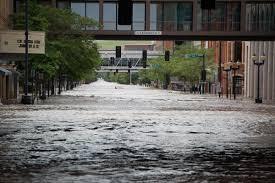Recent years in the US have witnessed an alarmingly increased amount of flood-related disasters, from flash floods and overflowing rivers, coastal surges, flash flooding events and flash floods resulting in flash flooding; to flash flooding of overflowing rivers; coastal surges. But why? A combination of environmental, infrastructural, human factors all compounding worsening this crisis are to blame for it all.
Climate Change and Extreme Weather
A key contributor to flooding crisis is climate change. Rising global temperatures lead to greater evaporation, leading to heavier precipitation that overwhelms drainage systems and waterways in its path, often flooding drainage systems or waterways in ways they were never designed for. Many cases of US flooding can often be traced back to more intense storms striking areas unprepared to deal with them.
Urban Development and Loss of Natural Absorption
Urban development is another contributing factor that has increased flooding throughout the US. As cities expand, more land becomes covered in concrete or asphalt surfaces which prevent rainwater from infiltrating into the ground naturally, forcing it instead to runoff quickly into storm drains or rivers instead, often leading to flash floods during heavy storms.
Aged Infrastructure
America’s stormwater and sewerage systems are decades old and not equipped to cope with today’s climate conditions, nor modern rainfall levels. When storm drains fail or flood controls break down, flooding occurs more severely than ever, contributing significantly to US flood damage. This factor alone accounts for much of flooding’s increased severity over recent years.
Rising Sea Levels
In coastal regions, rising sea levels are leading to more floodwater flooding and storm surge events, even on sunny days in places such as Miami, New Orleans and New York. Sea level rise is just another contributory factor that keeps leading to flood damage here in America.
Solving this issue requires taking multiple approaches: updating infrastructure, adopting smarter city planning practices and cutting greenhouse gas emissions. Understanding why flooding occurs is the first step toward building safer communities that are more resilient.
Read More About


